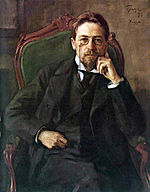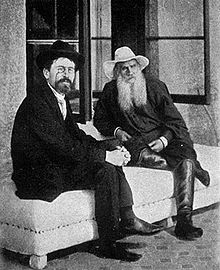Today is Prime Minister Modi’s Birthday. It took me time to think about the title of the blog. I always felt Modi’s success as leader is because of his selflessness, because he doesn’t have any selfish motives. Because he is not interested in any of his relatives or friends to benefit from his position. All these attributes which contribute for making a good leader are undoubtedly present and they are visible.

The intriguing part of the dynamic leader is his growth from a tea seller to the Prime Minister of the greatest democracy of the world. After contemplation I observed that here is a leader who plans the course of his life. And always keeps in view the challenges he is likely to face during the course. Of course this relates to the years after he had already decided to take up politics.

As a child he was an average student. There is no story talked about his brilliance during his education. However, his teacher confirmed that he was very good in debating. Besides he was fond of theater. There are no instances which have come to light which would depict that he was argumentative. But he was assertive. Whenever he took a decision he lived by it. He was never scared of upsetting his colleagues or seniors. The very fact that he did not accept his own child marriage shows that he was not scared of his parents or other members of the family. I find assertiveness is one of the very important quality of our Prime Minister.

When one is selfless it is very easy to take decisions (particularly hard decisions). He had decided to dedicate his life in the service of Nation. Therefore whatever he found was best for the nation he decided and pursued. These attributes of his personality are conspicuous even today. It is said about Steve Jobs that he was a great individual who could relate to only few persons in his large organization. He had built up the great organization but personally he would know only on a few members of his team. The same appears to be true for P.M Modi. He is also innovative, who takes new initiative and would be ready to bear the brunt of eventualities or the risks involved in such initiatives.

Wishing all the best for his long life. I would conclude by saying:
A very happy birthday Prime Minister Narendra Modi.

Thanks for reading.
The Indian White Revolution

Today, India is the largest producer of milk in the world.
There was a time in Mumbai when milk was not easily available. The government diary in Worli was not able to meet the requirement of the large population of Mumbai. The Dudhwala Bhaiyas were supplying milk to only a few at very high price. While in a city like Mumbai the problem was grave, other cities were also not much better off. That was the time when a visionary leader and an excellent manager came to Anand, a small town in Gujarat. Unmistakably, he is remembered as the one who changed the ‘Milk scene of India’. On this Day, 9th September in 2012, he left this world leaving all the great memories of the stupendous task. I give below some details of his life and work as described in Wikipedia.

Verghese Kurien (26 November 1921 – 9 September 2012) was a renowned Indian social entrepreneur and is best known as the “Father of the White Revolution”, for his ‘billion-litre idea’ (Operation Flood) – the world’s biggest agricultural development programme. The operation took India from being a milk-deficient nation, to the largest milk producer in the world, surpassing the United States of America in 1998, with about 17 percent of global output in 2010–11, which in 30 years doubled the milk available to every person. Dairy farming became India’s largest self-sustaining industry. He made the country self-sufficient in edible oils too later on, taking head-on the powerful and entrenched oil supplying lobby.

He founded around 30 institutions of excellence (like AMUL, GCMMF, IRMA, NDDB) which are owned, managed by farmers and run by professionals. As the founding chairman of the Gujarat Co-operative Milk Marketing Federation (GCMMF), Kurien was responsible for the creation and success of the Amul brand of dairy products. A key achievement at Amul was the invention of milk powder processed from buffalo milk (abundant in India), as opposed to that made from cow-milk, in the then major milk producing nations. His achievements with the Amul dairy led Prime Minister Lal Bahadur Shastri to appoint him as the founder-chairman of National Dairy Development Board (NDDB) in 1965, to replicate Amul’s “Anand model” nationwide. He is regarded as the greatest proponents of the cooperative movement in the world, his work has alleviated millions out of poverty not only in India but also outside.

Based on the brief, we took the script and music to him and it was approved immediately. He was a proud Indian who always wanted original Indian advertising. After that, even as they launched a number of other products they never had to do separate advertising.
It was always Amul: The Taste of India. Dr Kurien used to say, “If I have a good product and good advertising, it will sell by itself.”
That’s why Amul is such an iconic brand. In the food industry where brands are constantly coming up with schemes, it has never relied on any schemes to dealers or consumers.
Everything moved; they’ve never dumped. He gave the agency a total free hand and never changed so much as a comma or full stop in the copy.
Thanks for reading.
Commonsense.

Indeed, there is so much of information fed to us from all directions everyday that basic common sense is often overlooked. The biggest problem that arises out of our care for minute details and not using our commonsense is that the big picture is lost. We become so much engrossed in the finer points that our perspective itself gets disturbed. There is no doubt that the goals can be achieved only by remaining focused and taking all the actions which as per our plan are required. But keeping commonsense active is necessary. And when we don’t do it, the danger is that working out the plans in greater details than necessary, we may lose our path. Following picture even talks about our destiny depends on our ability to use commonsense all the time.

If we are too anxious to achieve something which is not practical, sometime, it may result in to a disaster. Bhagwad Gita has time and again emphasized the importance of detachment. We must not be emotionally attached to any person or any object as this leads to a constant fear of losing the same. Likewise, when we are extremely anxious of achieving our objective, the anxiety also misleads us.

Common sense according to a British Philosopher ‘is the best sense’. Oscar Wilde went a step further when he said, “now a day’s most people die of a sort of creeping common sense, and discover when it is too late that the only things one never regrets are one’s mistakes.”
Further, it’s very interesting to note the following observation:
The last time anybody made a list of the top hundred character’s attributes of New Yorkers, common sense clocked as low as number 79. They say more intelligent than anybody is ‘everybody’. The perception of everybody represents the commonsense that one should never ignore. In fact, nothing astonishes men/women as much as common sense and plain dealing. If an idea is worth having once it’s worth having twice too.

Whatever one may do one should always keep common sense in the forefront and always in view.
Thanks for reading.
Interpersonal skills

Good interpersonal skills form a basic requirement for an individual, today. If you are deficient in interpersonal skills, you meet road blocks everywhere. Life was never so interactive, never so social. We all depend on each other more than ever in the past. So it’s necessary not only to understand but consciously move forward to develop commendable interpersonal skills.
- Simply said, the skills relate to your getting along with people around you. Since we are all individuals, so we think differently. This we must keep in mind all the time. We may present our point of view but if we try to impose on others we will never be excused. Such actions kill the possibility of developing good interpersonal skills.

- In order that we respect others, we must listen to them carefully and understand their perspective. It is only by understanding others that we will know how to deal with them. Even when we are talking with juniors, we cannot take them for granted. Everyone is conscious of their rights of holding on to their opinions. So, in case we want to convince them we may do so respecting their opinions and presenting politely our view point. If you are able to establish the mutual benefit, everyone will appreciate your moves. You will in the process improve your interpersonal skills.

- We all have some hidden assumptions. These assumptions do determine our behavior. For example, if our views about a particular person are negative, we will assume that he/she will never help us. Here the negative assumption will act as a road block. Even if we had an unhappy experience, we should approach people with an open mind. Always assume positive intent and surely it will be helpful.
- It is normal that the conflicts are likely to occur among people who work together. The best way to build harmonious relationship is to understand each of them, respect their personal views and beliefs and resolve any conflict, sooner than later. Unresolved conflicts become hurdles in developing and sustain good relations. One must remember that a team can be victorious only if they work in harmony.

- Language and speech play a very important role in the development of your interpersonal skills. In case of inadequacy of language you may end up communicating a message that may be considered as offensive even when you don’t intend any offence. Your body language is also of great consequence. Maintaining a positive body language and cordiality in tone are extremely helpful. Time spent on mastery of the language will never go unrewarded.
To conclude, I would like to say that developing interpersonal skills consciously cannot be ignored by any management professional. In fact, organizations are hiring experts to train their employees develop this very special art. Better interpersonal skills are conducive to improving efficiency of the organization and also its bottom line. Customer relations solely depend on your proficient interpersonal skills.
Thanks for reading.
Happiness is not expensive.
Today when there is so much information available on all human emotions and the reasons there of no one has any right or business to be unhappy. Actually there was never a reason for people to be unhappy. Abraham Lincoln said in the early 19th century that ‘most people are about as happy as they make up their minds to be.’ However at that time there was no internet, literature was scanty and hardly available. Today, with the internet all the information and the images that one may require to collect about happiness, are easily available.
Vikram a student of 6th standard volunteered to collect the relevant information and the images on ‘how to be happy’. I reproduce the material collected by Vikram in about half an hour. When I went through it, I found that anyone who would spend some time to read the knowledge collected by Vikram and see the pictures again collected by him should be never unhappy.
He informed me that he collected the pictures from Google images. Further he collected the entire written material from Wikipedia. Please spend some time to look at the pictures and also a few minutes on reading the text which he collected from Wikipedia.










A smiling Rebecca L. Felton
Research has produced many different views on causes of happiness, and on factors that correlate with happiness, but no validated method has been found to substantially improve long-term happiness in a meaningful way for most people.
Sonja Lyubomirsky concludes in her book The How of Happiness that 50 percent of a given human’s happiness level is genetically determined (based on twin studies), 10 percent is affected by life circumstances and situation, and a remaining 40 percent of happiness is subject to self-control.
The results of the 75 year Grant study of Harvard undergraduates show a high correlation of loving relationship, especially with parents, with later life wellbeing
Psychologist Martin Seligman asserts that happiness is not solely derived from external, momentary pleasures, and provides the acronym PERMA to summarize Positive Psychology’s correlational findings: humans seem happiest when they have
- Pleasure (tasty food, warm baths, etc.),
- Engagement (or flow, the absorption of an enjoyed yet challenging activity),
- Relationships (social ties have turned out to be extremely reliable indicator of happiness),
- Meaning (a perceived quest or belonging to something bigger), and
- Accomplishments (having realized tangible goals
- Abraham Harold Maslow, an American professor of psychology, founded humanistic psychology in the 1930s. A visual aid he created to explain his theory, which he called the hierarchy of needs, is a pyramid depicting the levels of human needs, psychological, and physical. When a human being ascends the steps of the pyramid, he reaches self-actualization. Beyond the routine of needs fulfillment, Maslow envisioned moments of extraordinary experience, known as peak experiences, profound moments of love, understanding, happiness, or rapture, during which a person feels more whole, alive, self-sufficient, and yet a part of the world. This is similar to the flow concept of Mihály Csíkszentmihályi.
- Self-determination theory relates intrinsic motivation to three needs: competence, autonomy, and relatedness
HEALTH
- Richard Davidson‘s 2012 bestseller The Emotional Life of Your Brain argues that positive emotion and happiness benefit your long-term health. From a study conducted in 2005 by Andrew Steptow and Michael Marmot, findings have found that happiness is clearly related to biological markers that play an important role in health.
- At University College London, Steptow and Marmot collected health and well-being data from 116 men and 100 women. All 216 participants were middle-aged, British civil servants between the ages of 45 and 59. The researchers aimed to analyze whether there was any association between well-being and three biological markers: heart rate, cortisol levels, and plasma fibrinogen levels. Interestingly, the participants who rated themselves the least happy had cortisol levels that were 48% higher than those who rated themselves as the most happy. The least happy subjects also had a large plasma fibrinogen response to two stress-inducing tasks: the Stroop test, and tracing a star seen in a mirror image.
- In Happy People Live Longer, Frey reports that happy people live 14% longer, increasing longevity 7.5 to 10 years.
- Steptow and Marmot furthered their studies by using their participants three years later to repeat the physiological measurements. They found that participants who scored high in positive emotion continued to have lower levels of cortisol and fibrinogen, as well as a lower heart rate.
Despite a large body of positive psychological research into the relationship between happiness and productivity, happiness at work has traditionally been seen as a potential by-product of positive outcomes at work, rather than a pathway to success in business. However a growing number of scholars, including Boehm and Lyubomirsky, argue that it should be viewed as one of the major sources of positive outcomes in the workplace.
Thanks for reading.
Fear- a Bane or a Boon?
 Most people suffer fear in certain situations or at some point of life. But some people may say that they never experience fear. They are the ones who don’t speak the truth. Fear is a normal human response to very challenging tasks. However, it becomes a bane if a person suffers fear without any reason. If they suffer from unfounded fears. The funny thing is, we meet such people in abundance. This is funny as well as unfortunate.
Most people suffer fear in certain situations or at some point of life. But some people may say that they never experience fear. They are the ones who don’t speak the truth. Fear is a normal human response to very challenging tasks. However, it becomes a bane if a person suffers fear without any reason. If they suffer from unfounded fears. The funny thing is, we meet such people in abundance. This is funny as well as unfortunate.
According to Bertrand Russell, many a time the source of fear is superstition. Cruelty of one kind or the other also causes fear. The management professionals are often attacked by this malady if they are perfectionists. There is nothing perfect in life. One may say only nature is perfect. All human beings have only to work towards achieving perfection which happens to be mirage.
One American once said that his life had been full of misfortunes which never took place. Fear of death is worse than the death itself. Left to itself, fear grows from bad to worse. Fear follows the most important of the Murphy’s laws – ‘left to themselves things go from bad to worse’

If this is the case and what should one do? Fear is a question. First of all you have to answer it yourself. What are you afraid of, and why? Just as the doctor goes in to the history of the disease to find a cure, you have to bring to light all the reasons which had been the cause of your fears. And then you have to use fear as your friend. Tell yourself, ‘fear is here with its gift of energy and heightened awareness’. In this situation you can learn the best lessons of your life and act most efficiently. In fact heightened feelings enhance your productivity. You achieve greater heights. Since we know that fear robs our mind of power of reason and action, we should fight it out by doing things we fear the most. You must try to start or take action in a project which you have been procrastinating for a long time. That you can do by invoking your courage. And what is courage? ‘Courage is fear that has said its prayers’, as wittily explained by Dorothy Bertrand.
Remember fear is a dark room where negatives are developed. So don’t get in to this dark room. Fortune helps the brave!

Thanks for reading.
Better Communication Improves Productivity
Productivity of an organization is a collaborative effort of all the stack holders where:
There are no misunderstandings….managers communicate clearly the tasks to be performed by the employees….
Good listening skills empower the staff to correctly perceive and work in tandem… gathering the relevant data and presenting to the higher ups for policy decisions….
All above and many more productivity relating activities depend on communications. Therefore, good communication skills form the nucleus of a progressive organization. Clear effective communications at all level are necessary for an organization to prosper. The wastages are cutout and both the employees and customers find their satisfaction using this highly effective tool. Let’s look at the following:

Good Communications Avoid Misunderstanding: Misunderstandings created by poor communications can be very expensive to the organization. The resulting confusion can cause heavy losses. Unclear instructions often make the juniors confused and afraid to clarify. The result is disastrous.

Effective Communications Provide Direction: The team efforts have to be aligned with the company’s vision and goals. It’s only when all concerned contribute to the goals that both top line and bottom line rise. This is not possible without effective communication.

Healthy Communications Breed Healthy Culture: every organization carves out a culture of its own. When the staff members coming from different backgrounds effectively communicate with each other, corporate culture becomes healthy. Therefore good training in communications is critical towards promoting a healthy corporate culture.

Focused Articulate Communication Encourages Accountability: It’s only when an organization practices effective communications skills that the staff are empowered to keep one another accountable. Effective communication provides such instruction as enables each employee to know exactly what is expected of him/her. In the process a good level of accountability with one another is maintained. This in turn increases productivity.
In the competitive environment of today, business houses have to harness their resources to maintain an edge in the market place. This is possible only if at every level clear, lucid communications are practiced.
Thanks for reading.
Fear- a Bane or a Boon?

Most people suffer fear in certain situations or at some point of life. But some people may say that they never experience fear. They are the ones who don’t speak the truth. Fear is a normal human response to very challenging tasks. However, it becomes a bane if a person suffers fear without any reason. If they suffer from unfounded fears. The funny thing is, we meet such people in abundance. This is funny as well as unfortunate.
According to Bertrand Russell, many a time the source of fear is superstition. Cruelty of one kind or the other also causes fear. The management professionals are often attacked by this malady if they are perfectionists. There is nothing perfect in life. One may say only nature is perfect. All human beings have only to work towards achieving perfection which happens to be mirage.
One American once said that his life had been full of misfortunes which never took place. Fear of death is worse than the death itself. Left to itself, fear grows from bad to worse. Fear follows the most important of the Murphy’s laws – ‘left to themselves things go from bad to worse’

If this is the case and what should one do? Fear is a question. First of all you have to answer it yourself. What are you afraid of, and why? Just as the doctor goes in to the history of the disease to find a cure, you have to bring to light all the reasons which had been the cause of your fears. And then you have to use fear as your friend. Tell yourself, ‘fear is here with its gift of energy and heightened awareness’. In this situation you can learn the best lessons of your life and act most efficiently. In fact heightened feelings enhance your productivity. You achieve greater heights. Since we know that fear robs our mind of power of reason and action, we should fight it out by doing things we fear the most. You must try to start or take action in a project which you have been procrastinating for a long time. That you can do by invoking your courage. And what is courage? ‘Courage is fear that has said its prayers’, as wittily explained by Dorothy Bertrand.
Remember fear is a dark room where negatives are developed. So don’t get in to this dark room. Fortune helps the brave!

Thanks for reading.
Anton Chekhov
Anton Chekhov was born in 29th January 1860 and died on 15th July 1904. Though he was a doctor by profession, he is remembered as one of the finest short story writers in the world. Some of his stories have been adapted as plays, films etc. He died young at the age of 44 years. He practiced his medical profession throughout his literary career. Jocularly, he would say ‘medicine is my lawful wife, and literature is my mistress.’ 
Young Anton.
He also wrote a number of plays. These are: ‘Uncle Vanya, Three Sisters and The Cherry Orchard’. However his play ‘The seagull’ was a big flop. That’s why he stopped writing plays. He introduced stream of consciousness technique in his stories. This was well ahead of time. But his treatment of this technique was quite simple and therefore his stories are merited by one and all. Later Russian literary writers lauded creativity of technique and his imagination.

Painting of Anton Chekhov.
He had to spend lot of time attending to his patients. At times, they would come from far of places. He had also to visit the patients who could not come to his clinic. Such visits were time consuming but he continued. His interaction with patients gave him lot of material which he used in literary creations.

Anton with Leo Tolstoy.
Today is his death anniversary. Our deepest regards to one of the greatest short story writer the world had seen so far.
Thanks for reading.
3 Aspects of Personality.

Simply said, any person must assess himself/herself on the 3 important aspects of personality: i) Acquiring knowledge ii) Developing an ability to explain what you know iii) Using your knowledge for your work and activities.
- Acquiring Knowledge: One acquires knowledge with formal educations. More importantly practical knowledge is acquired once you entered your business or profession. Every day can give us some lesson provided we sit down and contemplate to review the day. So knowledge is a continuous, never ending process. Even when we have learnt something in our formal education, we may have to supplement the same with additional information during life.

- Ability to transfer knowledge: Anything that we do is a collaborative effort, today. Thus, you have to communicate your ideas, your views and so on. Unless you are adept in this aspect of personality, your growth will have some kind of limitation. So ability to transfer knowledge and make others do what you want to them to do is crucial to the success of your project. If there is any deficiency in this ability to communicate, the same will show in the progress of the project.

- Putting knowledge to work: One may have acquired great knowledge but unless they put it to use its value will never be discovered. So, thoughts are not enough. Thoughts must be converted in to action. It is the action which can bring about any result. The more efforts you put in, the better results are rewarded. But one should never have the expectation that all efforts will bring in results. Some time you work very hard but the result are not commensurate with the amount of efforts made. That is the way life works. No one should ever expect the poetic justice in life.
 It is observed that those who excel in the first aspect of personality may become philosophers and the kind. They are generally good advisors but not so good in performance. They need to develop a perspective so that they are not lost in the ocean of knowledge. Knowledge is unending, indeed. They have to limit themselves to what is needed by them.
It is observed that those who excel in the first aspect of personality may become philosophers and the kind. They are generally good advisors but not so good in performance. They need to develop a perspective so that they are not lost in the ocean of knowledge. Knowledge is unending, indeed. They have to limit themselves to what is needed by them.
Other people, who are quiet, apply their mind and rely more on action. They are often the risk takers. They are the mostly likely people to become business leaders. They hire people for various functions which they feel that they are not able to perform. But because of their rich and sometime checkered experience, they have a lot to talk about. But they tend to become self centered.
People who develop excellent ability to transfer knowledge become teachers, lecturers, public speakers, trainers and performers. The nucleolus of their progress always remains communication skills. The world today, is heading toward the situation where communication skills have assumed a great importance. We spend more time on conference calls, on social media, on organizing/conducting/participating in meetings and so on. The human communication skills have only brought about all the progress that we see around us. During the last century world has seen maximum material progress which has been achieved with maximum communicative collaboration.
Thanks for reading.